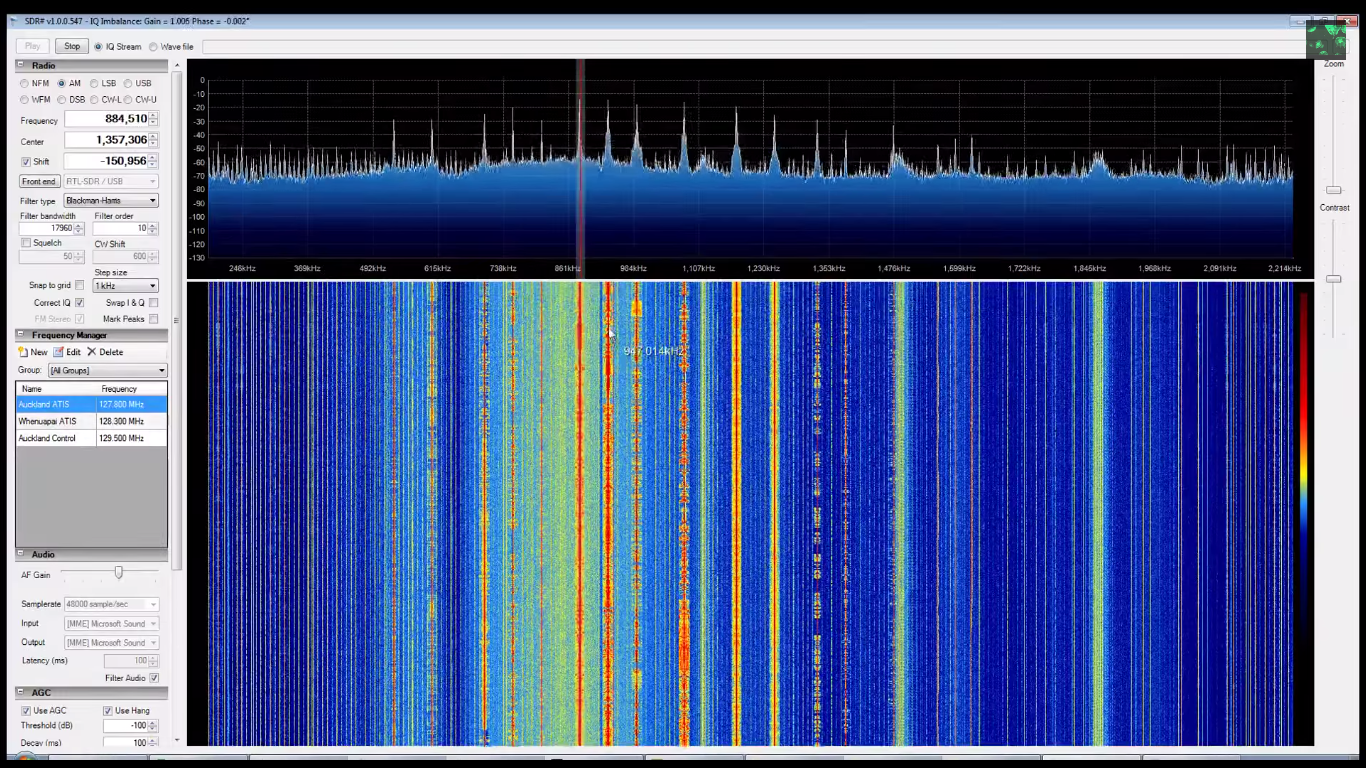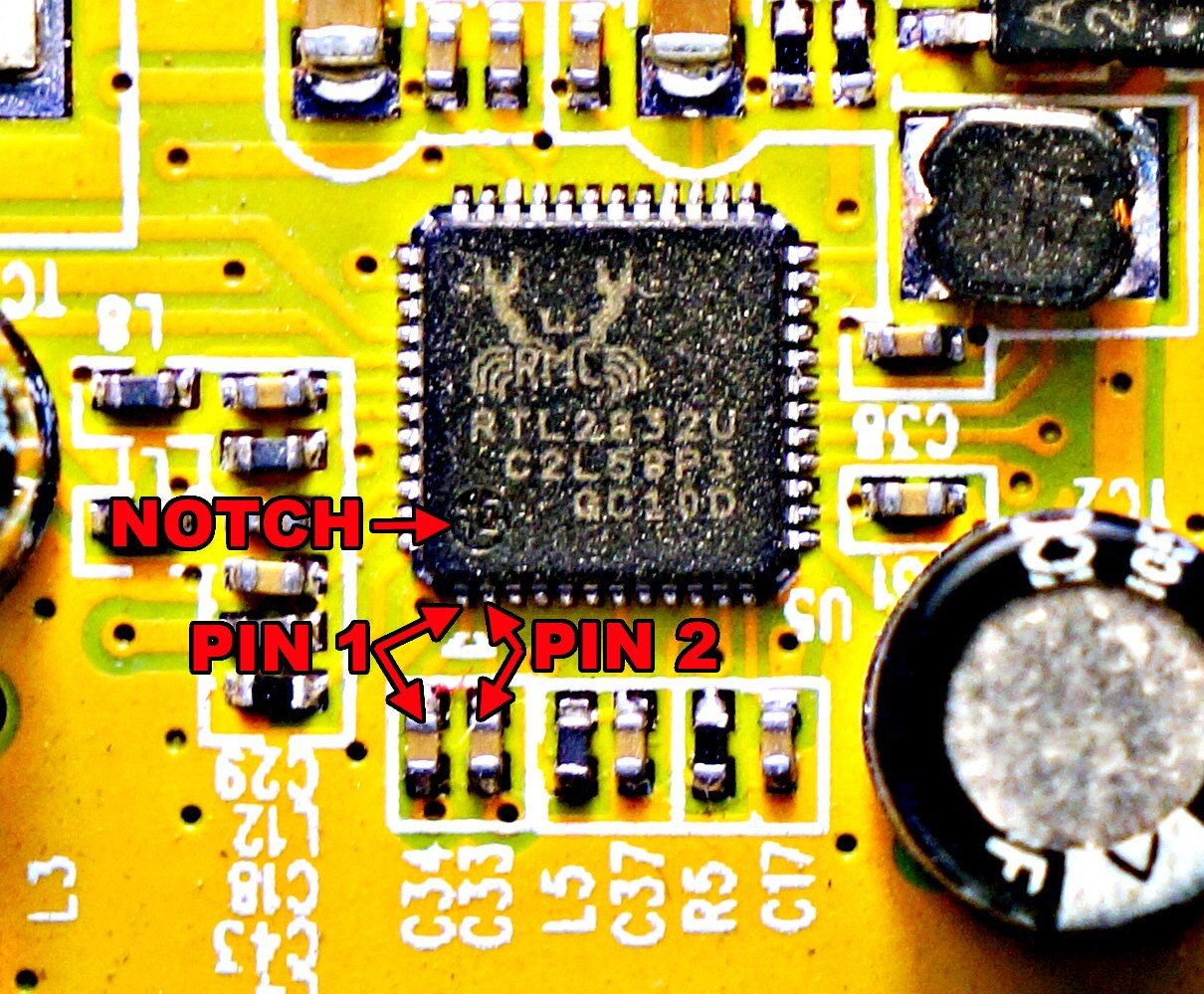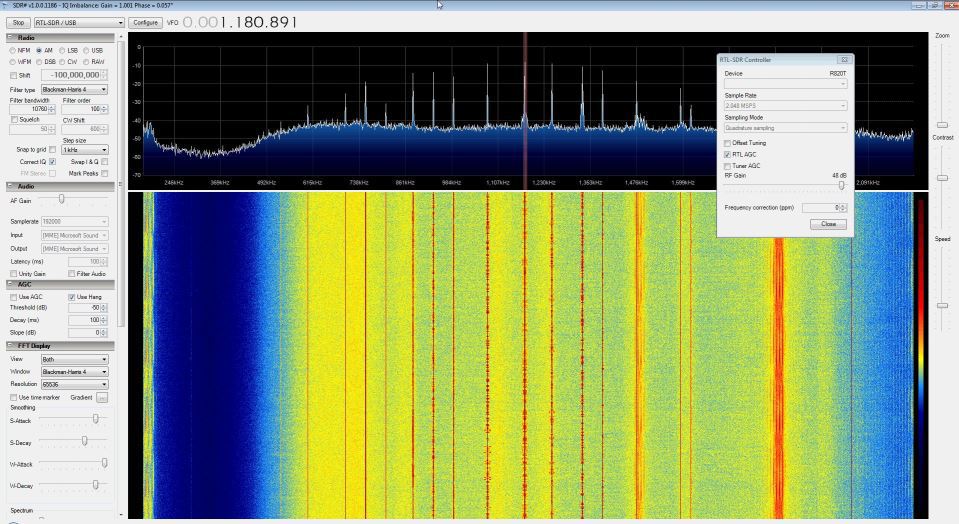Receiving HF to RTL-SDR, free of charge without converter

After reading the article about cheap SDR from a TV tuner, I immediately rushed to order a dongle on the R820T. But everything was overshadowed by the fact that it was impossible to receive on short waves, because in my city there is nothing interesting on VHF: a couple of taxis, fast and occasional radio amateurs. After a brief search, I came across several methods of “uncovering” a 0-15 MHz tuner without using relatively expensive upconverters.
Method number 1. Iron
This method consists in directly connecting the antenna to the RTL2832U chip, bypassing the tuner chip.
')

This picture shows the pins for soldering the wire. Solder in front of the capacitor. Requires precision jewelery and hands from the right place (the author thus ditched his first dongle). Also keep in mind that static protection is absent - to spoil the chip is not difficult.
After soldering to SDR #, you must select Direct sampling (I)
Method number 2. Soft
UPD: There may be problems with normal reception. If possible, it is better to use the iron method.
Fortunately, the owners of the whistles on the R820T, for this chip, you can do without a soldering iron, just replacing the rtlsdr.dll DLL with the patched one. This library soft-disconnects the tuner chip, forcing the signal to go directly to the RTL2832U and allowing you to tune to HF.
Actually, DLL
We rename it to rtlsdr.dll and replace the original in the SDR # folder, then turn it on in the RTL-AGC menu and set the gain to 48dB.

The owners of the E4000 are less fortunate: with some versions of the driver, they can be tuned to a tiny plot of 3686.6 - 3730 MHz. This does not require replacing the DLL and reconfiguring SDR #.
And finally, the video reception process.
If fell off: video
That's all. I hope these instructions helped you.
UPD: Judging by the comments, it works far from everywhere. Please unsubscribe those who still earned.
Source: https://habr.com/ru/post/235215/
All Articles